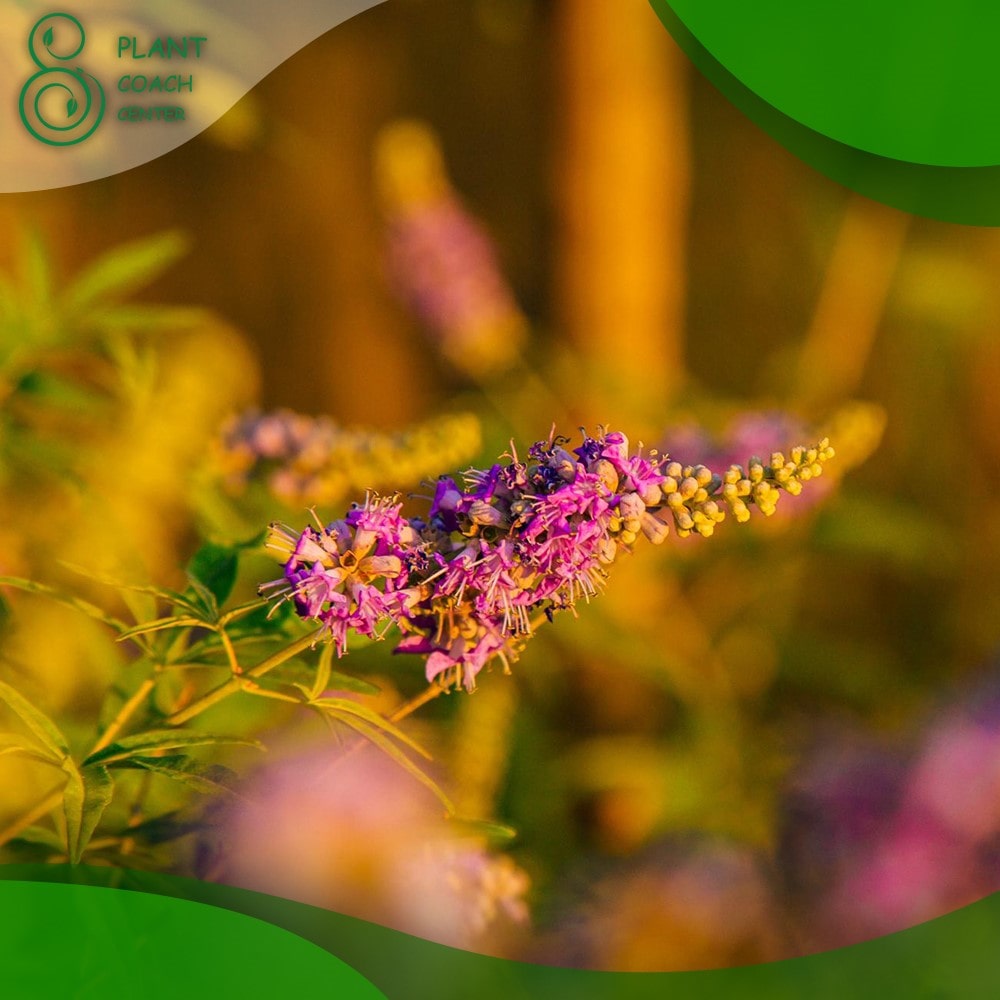Gardening enthusiasts and plant lovers are often drawn to the beautiful and vibrant Buddleia, commonly known as the butterfly bush. With its captivating clusters of flowers and ability to attract butterflies and other pollinators, Buddleia has become a beloved addition to gardens worldwide. However, to ensure the optimal growth, health, and blooming potential of this versatile plant, proper plant coaching and pruning techniques are essential.
What is Buddleia?
Buddleia, scientifically known as Buddleja, is a genus of flowering plants comprising approximately 140 species. Native to various regions around the world, including Asia, Africa, and the Americas, these shrubs are renowned for their eye-catching flowers, which come in a range of colors such as purple, pink, white, and yellow. Buddleia’s allure extends beyond its aesthetic appeal, as it acts as a magnet for butterflies, hummingbirds, and bees, making it an excellent addition to any wildlife-friendly garden.
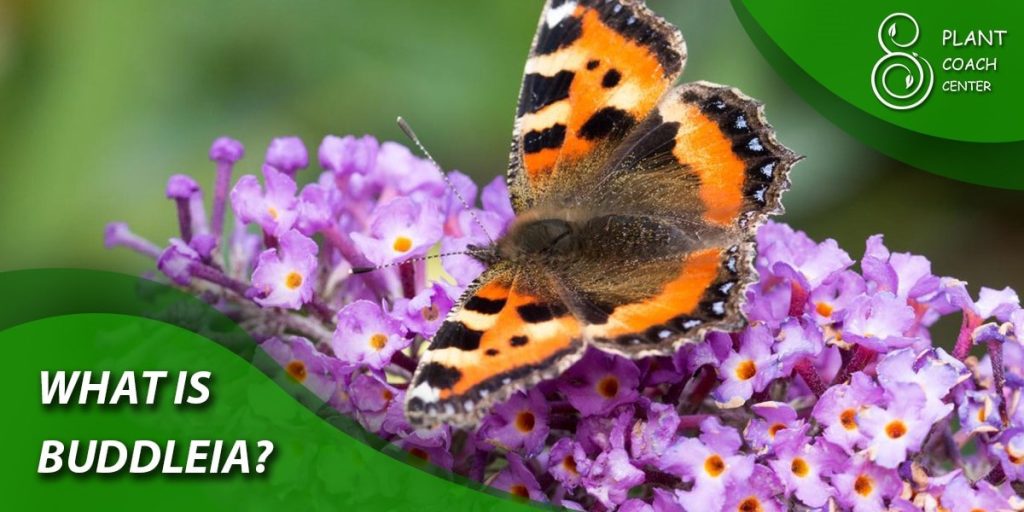
Understanding the Importance of Plant Coaching
Plant coaching involves providing guidance, care, and support to plants, enabling them to thrive in optimal conditions. It encompasses a range of practices, including proper pruning, regular monitoring, and addressing plant problems promptly. While some may consider plant coaching as a new concept, it is, in fact, an age-old technique that has been refined and enhanced over time. By becoming a plant coach, you can develop a deeper connection with your plants, observe their growth patterns, and intervene when necessary to promote their overall well-being.
The Life Cycle of Buddleia: A Seasonal Overview
To effectively coach and care for your Buddleia, it is crucial to understand its life cycle throughout the different seasons. Each season brings unique challenges and opportunities, requiring specific actions and adjustments to ensure the plant’s success.
Spring: Growth and Budding
In spring, as the weather begins to warm up and daylight hours increase, Buddleia starts its active growth phase. New shoots emerge from the base of the plant, and leaves unfurl, revealing their vibrant green color. During this period, it is essential to monitor the plant for any signs of stress, diseases, or nutrient deficiencies. Providing adequate water and ensuring proper drainage is crucial for healthy root development.
As the season progresses, Buddleia forms buds, a precursor to the spectacular floral display it is known for. These buds will gradually develop into beautiful clusters of flowers, attracting butterflies and other pollinators to your garden. However, resist the temptation to prune heavily during this phase, as it can hinder flower production. Instead, focus on removing any dead or damaged wood and maintaining a balanced shape.
Summer: Flowering and Maintenance
The summer months mark the pinnacle of Buddleia’s beauty, with the plant adorned in a profusion of colorful blooms. The clusters of flowers are not only a treat for the eyes but also provide sustenance for a variety of pollinators. Bees, butterflies, and hummingbirds flock to the nectar-rich flowers, creating a lively and animated garden scene.
While the plant is in full bloom, regular maintenance practices become crucial. Deadheading, the process of removing spent flowers, promotes continuous blooming and prevents the plant from diverting energy into seed production. To deadhead Buddleia, locate the spent flower cluster and trace it down to a leaf node, then make a clean cut just above the node. This simple practice encourages the plant to redirect its energy into producing more flowers.
Regular watering is essential during summer, especially in hotter and drier climates. Aim to keep the soil consistently moist but not waterlogged, as Buddleia prefers well-draining conditions. Mulching around the base of the plant helps retain moisture and suppress weed growth, contributing to the overall health of the shrub.
Autumn: Preparing for Winter
As summer draws to a close, Buddleia begins to transition into a different phase in preparation for the colder months ahead. Autumn is a critical time for plant coaching and pruning, as proper care during this period can greatly influence the plant’s health and blooming performance in the following year.
Assessing Plant Health and Needs
Before deciding on the appropriate pruning strategy for your Buddleia, it’s essential to conduct a thorough assessment of the plant’s overall health and condition. Look for any signs of diseases, pest infestations, or nutrient deficiencies. Check the foliage for discoloration, wilting, or unusual spots, which might indicate potential issues.
If you identify any problems during your inspection, take immediate action to address them. Treating diseases or pest infestations promptly can prevent them from spreading and causing further harm to the plant. Applying appropriate fertilizers or soil amendments can rectify nutrient deficiencies and improve the plant’s vigor.
Timing Considerations for Autumn Pruning
One of the most common questions among gardeners is, “When should I cut back Buddleia in autumn?” The timing of pruning in autumn depends on the climate in your region and the specific Buddleia species you have in your garden.
For regions with mild winters and where Buddleia retains its foliage throughout the cold season, it is generally best to wait until late winter or early spring to perform more extensive pruning. This approach allows the plant to benefit from the added protection provided by its foliage during the winter months.
On the other hand, if you live in an area with harsh winters, where Buddleia typically loses its leaves, late autumn is an ideal time to cut back the plant. By removing dead and diseased wood and thinning out the canopy, you can help reduce the risk of fungal infections and improve the plant’s overall resilience against winter stresses.
Always use sharp and clean pruning tools to ensure clean cuts that promote quick healing. Make your cuts at a 45-degree angle and just above a leaf node or bud to encourage new growth. Remember that moderate pruning is generally recommended in autumn to maintain the plant’s shape and prepare it for the coming season.
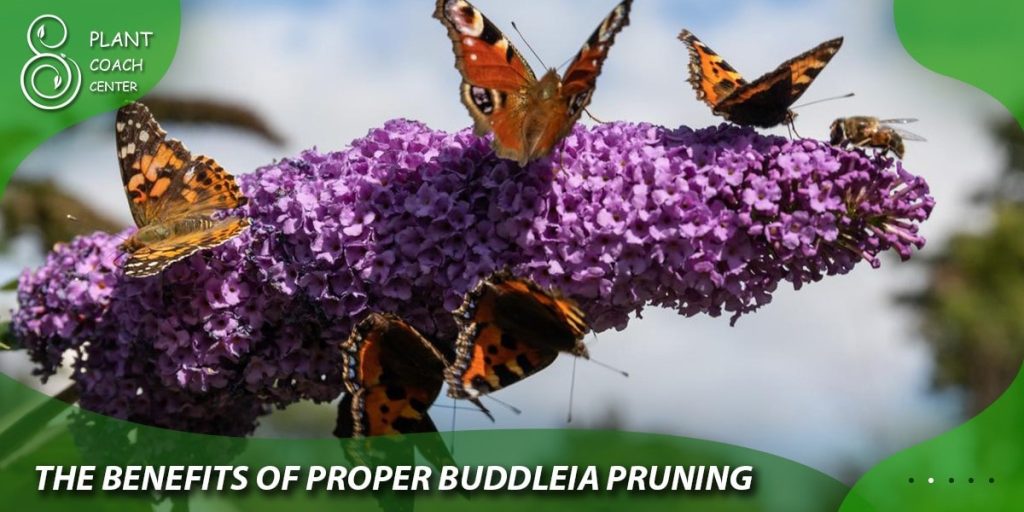
The Benefits of Proper Buddleia Pruning
Proper pruning is the cornerstone of effective plant coaching, and Buddleia is no exception. Understanding the benefits of pruning will help you appreciate its importance in promoting the overall health and appearance of your butterfly bush.
Promoting Health and Vigor
Regular and well-executed pruning encourages Buddleia to allocate resources efficiently, focusing on new growth and flowering. Removing dead, damaged, or diseased wood reduces the risk of pathogens spreading throughout the plant. Additionally, thinning out the canopy allows better air circulation and sunlight penetration, further reducing the likelihood of fungal issues.
By following correct pruning techniques, you can also help shape the plant, ensuring a balanced and aesthetically pleasing form. This not only enhances its visual appeal in the garden but also contributes to its overall health and longevity.
Encouraging Blooming and Attracting Wildlife
Buddleia’s primary allure lies in its ability to attract butterflies, bees, and hummingbirds with its nectar-rich flowers. Pruning plays a vital role in maximizing its blooming potential. As mentioned earlier, deadheading spent flowers stimulates the plant to produce new blooms, creating a continuous display of color throughout the growing season.
The abundance of flowers not only provides a delightful visual spectacle for gardeners but also serves as a vital food source for pollinators. As these creatures visit the flowers, they aid in pollination, promoting genetic diversity and the production of viable seeds.
Shaping for Aesthetics and Landscape Design
Buddleia’s graceful arching branches and beautiful blooms make it an excellent choice for landscape design. Pruning allows you to control the shape and size of the plant, ensuring it fits seamlessly into your garden’s overall design. Whether you prefer a formal, manicured look or a more naturalistic and free-flowing arrangement, appropriate pruning can help achieve your desired aesthetic.
Understanding Buddleia Growth Habits
To become an effective plant coach for your Buddleia, it is essential to familiarize yourself with the growth habits and characteristics of this versatile shrub. Understanding how Buddleia grows will help you make informed decisions about pruning, fertilization, and overall care.
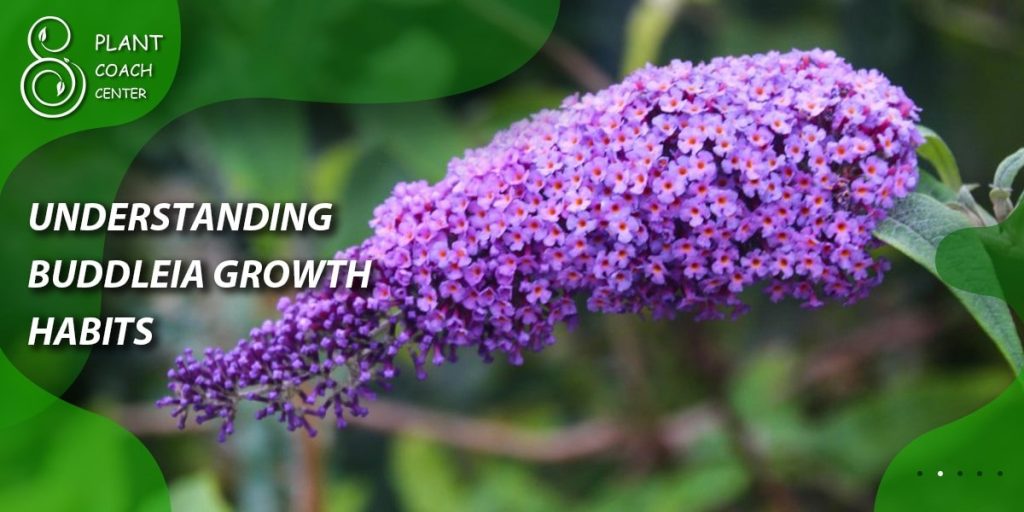
Growth Patterns and Rate
Buddleia is known for its rapid growth rate, especially in favorable conditions. During the active growing seasons of spring and summer, you may notice significant new growth in the form of shoots and leaves. This fast growth can sometimes result in a slightly unruly appearance, making regular pruning a valuable practice for maintaining the plant’s shape and size.
The plant’s growth habit is generally upright and arching, with branches extending outward from the central stem. Some Buddleia varieties may have a more compact and bushy growth habit, while others tend to be more open and airy.
Factors Influencing Growth
Several factors influence the growth of Buddleia, and understanding these factors can aid in providing appropriate plant coaching:
- Sunlight: Buddleia thrives in full sun, requiring at least 6 to 8 hours of direct sunlight daily for optimal growth and flowering.
- Soil Conditions: Well-draining soil is crucial for Buddleia, as it dislikes sitting in waterlogged conditions. It is adaptable to various soil types, but a slightly acidic to neutral pH range is generally preferred.
- Watering: While Buddleia is relatively drought-tolerant once established, consistent watering is essential during its establishment phase and in hot and dry weather.
- Temperature and Climate: Buddleia can tolerate a wide range of temperatures, but some varieties may be more cold-hardy than others. Pay attention to the specific requirements of your Buddleia species and provide appropriate protection during extreme cold spells.
- Pruning Practices: The timing and extent of pruning can significantly influence Buddleia’s growth. Proper pruning stimulates new growth and flowering, while excessive or incorrect pruning can impede its development.
- Fertilization: Providing balanced and appropriate fertilization can boost Buddleia’s growth and overall health. However, avoid excessive fertilization, as it may lead to excessive foliage growth at the expense of flowering.
By being mindful of these factors, you can create a conducive environment for your Buddleia to thrive and reach its full potential.
Plant Coaching: The Fundamentals
Plant coaching is an approach to gardening that involves actively observing, nurturing, and guiding plants to achieve their best possible state. The role of a plant coach goes beyond merely planting and watering; it requires a deeper understanding of a plant’s unique needs and characteristics.
What is Plant Coaching?
Plant coaching is akin to being a mentor for your garden’s plants. It involves being attuned to their needs, recognizing early signs of stress or problems, and taking proactive measures to ensure their well-being. Just like coaching in sports, where a coach guides athletes to reach peak performance, plant coaching aims to maximize a plant’s growth, health, and beauty.
A plant coach takes on a nurturing role, closely observing the plant’s growth patterns, understanding its growth requirements, and providing timely care and support. This hands-on approach fosters a deeper connection with the plants and cultivates a more satisfying gardening experience.
The Role of Plant Coaches
As a plant coach for your Buddleia and other garden plants, your responsibilities include:
- Regular Observation: Pay attention to your Buddleia’s appearance, foliage color, flower production, and overall health. Frequent observations allow you to detect early signs of stress or any unusual changes that might indicate potential problems.
- Pruning and Deadheading: Proper pruning and deadheading are vital aspects of plant coaching. By removing dead or spent plant material, you encourage new growth and redirect the plant’s energy towards healthy development.
- Watering and Fertilizing: Monitor your Buddleia’s watering needs and provide appropriate fertilization to ensure it receives the necessary nutrients for robust growth and flowering.
- Pest and Disease Management: Stay vigilant for signs of pests and diseases, and take prompt action to control infestations or infections. Early intervention can prevent the spread of problems and protect your plant’s health.
- Environmental Adjustment: Be aware of your garden’s microclimate and make adjustments as needed. Provide shelter during extreme weather conditions, ensure proper sunlight exposure, and improve soil conditions when necessary.
Assessing Plant Health and Needs
An integral part of plant coaching is assessing the health and needs of your Buddleia. Regular plant inspections allow you to identify any potential issues and address them promptly. Here are some steps to conduct a thorough assessment:
- Visual Inspection: Look for any discoloration, wilting, or unusual growth patterns in the foliage and flowers. Pay attention to leaves, stems, and buds for any signs of damage or pests.
- Root Health: While Buddleia has a robust root system, it’s essential to inspect the roots periodically. Gently loosen the soil around the base of the plant and examine the roots for signs of rot, pests, or compacted soil.
- Soil Analysis: Conduct a soil test to determine the pH level and nutrient content of the soil. This information can guide your fertilization practices and help you provide the appropriate soil amendments.
- Watering Needs: Monitor soil moisture levels and adjust your watering schedule accordingly. Ensure that the soil stays evenly moist without becoming waterlogged.
- Environmental Factors: Consider external factors that might impact your Buddleia’s health, such as extreme temperatures, strong winds, or nearby competing plants.
By regularly assessing your Buddleia’s health and needs, you can proactively address any issues and ensure it remains in optimal condition.
Identifying Common Buddleia Problems
As a diligent plant coach, one of your primary responsibilities is to identify and address any issues that may arise with your Buddleia. Despite its resilience, this beautiful shrub is not immune to certain problems, including pests, diseases, and nutrient deficiencies. Understanding the signs and symptoms of these issues is crucial for providing timely intervention and preventing further damage.
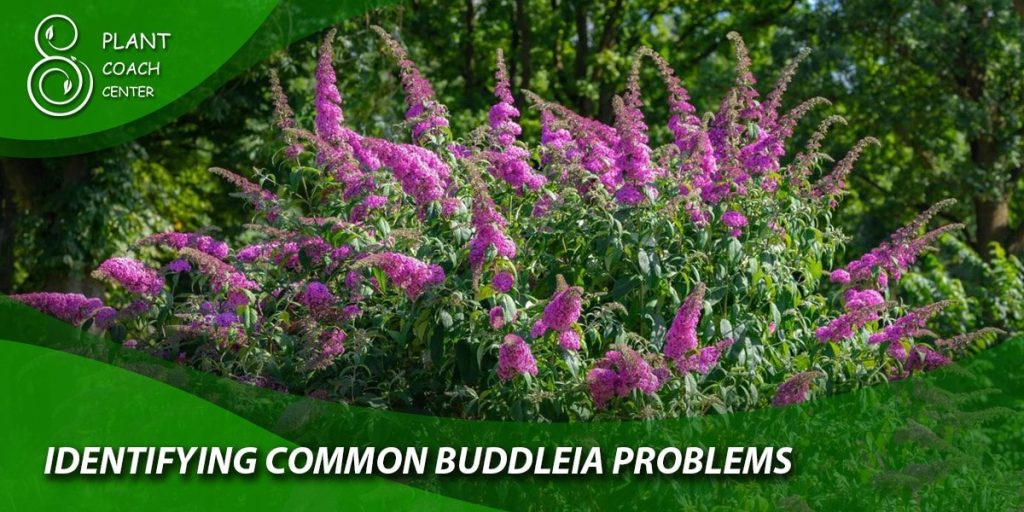
1. Pests and Diseases
1.1 Aphid Infestations and Control
Aphids are small, sap-sucking insects that can quickly multiply and infest your Buddleia. They are typically found on the undersides of leaves and new growth. Common signs of an aphid infestation include curled or distorted leaves, sticky honeydew residue, and the presence of ants attracted to the honeydew.
Control and Treatment: To address aphid infestations, you can use a strong blast of water to dislodge the pests from the plant. Additionally, introducing beneficial insects like ladybugs or lacewings can help keep aphid populations in check. If the infestation is severe, you can use horticultural oils or insecticidal soaps following the manufacturer’s instructions.
1.2 Caterpillar and Butterfly Concerns
While butterflies are welcome visitors to Buddleia, some caterpillars can be problematic. Certain species of caterpillars may chew on the leaves, causing unsightly damage to the plant.
Control and Treatment: If the caterpillar population is small, handpicking and removing them from the plant can be effective. However, if the infestation is widespread, you may need to resort to using biological or botanical insecticides to control the caterpillars.
1.3 Fungal Infections and Management
Buddleia is susceptible to certain fungal diseases, such as powdery mildew and leaf spot. Powdery mildew appears as a white, powdery substance on the leaves, while leaf spot causes small, dark spots on the foliage.
Control and Treatment: To manage fungal infections, ensure good air circulation around the plant by pruning to open up the canopy. Avoid overhead watering, as excess moisture can contribute to fungal growth. Applying fungicides may be necessary if the infection is severe, but focus on using preventative measures to minimize the need for chemical control.
2. Nutrient Deficiencies and Fertilization
Buddleia, like any other plant, requires essential nutrients for healthy growth and flowering. A lack of certain nutrients can lead to stunted growth, yellowing leaves, and reduced blooming.
2.1 Nitrogen Deficiency
Nitrogen deficiency often results in pale yellow leaves, particularly in older leaves. The plant may exhibit reduced growth and flower production.
Fertilization: To address nitrogen deficiency, apply a balanced fertilizer with a higher nitrogen content. Follow the manufacturer’s instructions for application rates.
2.2 Phosphorus Deficiency
Phosphorus deficiency may lead to poor flower development and weak root systems. The leaves may also have a bluish tint.
Fertilization: To address phosphorus deficiency, use a fertilizer with a higher phosphorus content. Bone meal is a natural source of phosphorus that can be worked into the soil around the base of the plant.
2.3 Potassium Deficiency
Potassium deficiency can cause leaf edges to become brown or scorched. The plant may also show reduced resistance to environmental stresses.
Fertilization: Use a fertilizer with a higher potassium content to address this deficiency. Potassium sulfate or potassium chloride are suitable options.
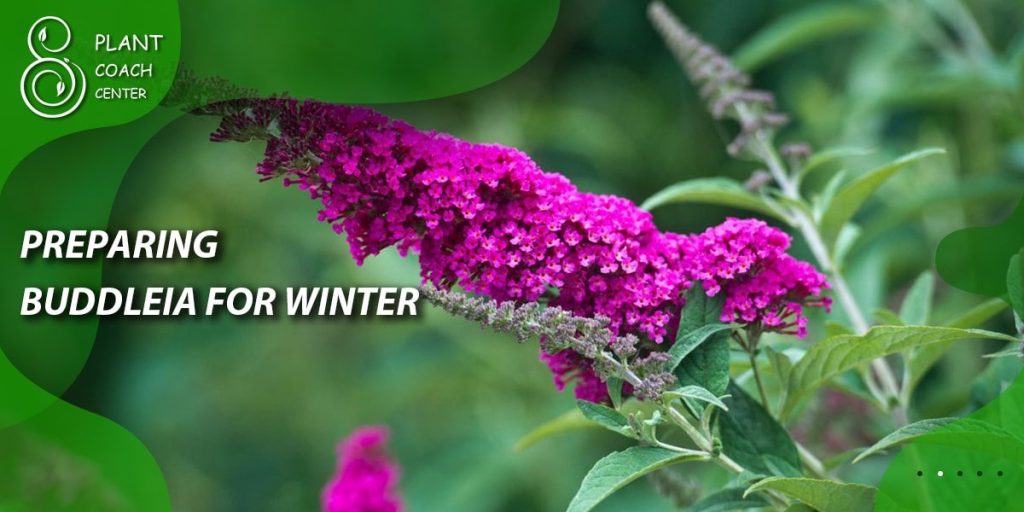
3. Environmental Stress Factors
Various environmental stress factors can affect the health of your Buddleia.
3.1 Overwatering and Poor Drainage
Overwatering or poor drainage can lead to root rot and other fungal diseases. Signs of overwatering include wilting, yellowing leaves, and a decline in overall health.
Management: Ensure that your Buddleia is planted in well-draining soil, and avoid overwatering. Allow the soil to dry out slightly between watering sessions.
3.2 Extreme Temperatures
Buddleia is generally hardy, but extreme temperatures can stress the plant. Frost or cold damage may cause leaf discoloration and wilting.
Protection: Provide temporary protection during cold snaps by covering the plant with a cloth or frost blanket. If you experience hot summers, consider providing some shade during the hottest part of the day.
By promptly identifying and addressing these common problems, you can ensure your Buddleia remains healthy and vibrant throughout the year.
Best Practices for Buddleia Pruning
Pruning is a fundamental aspect of plant coaching, and for Buddleia, it is a key practice to promote healthy growth, abundant blooming, and an attractive appearance. Understanding the best practices for pruning will empower you to shape your Buddleia according to your preferences and maintain its overall health.
1. Pruning Tools and Equipment
Before delving into the specific pruning techniques, it’s crucial to have the right tools for the job. Proper pruning tools ensure clean cuts that minimize damage to the plant and facilitate quick healing.
Essential Pruning Tools:
- Hand Pruners: Use sharp bypass pruners for cutting smaller branches and stems.
- Loppers: For thicker branches that are too large for hand pruners, use loppers with long handles.
- Pruning Saw: A pruning saw is helpful for cutting larger branches that are beyond the capacity of hand pruners or loppers.
- Garden Gloves: Wear sturdy garden gloves to protect your hands from thorns and potential irritants.
Sanitation: Ensure that all pruning tools are clean and sanitized before use to prevent the spread of diseases between cuts. Wipe the blades with rubbing alcohol or a bleach solution between cuts or when moving from one plant to another.
2. Different Pruning Techniques
Buddleia responds well to various pruning techniques, each serving a specific purpose. The following pruning practices are essential for maintaining the health and appearance of your butterfly bush:
2.1 Deadheading Spent Blooms
Deadheading is the practice of removing faded or spent blooms from the plant. This encourages the plant to produce more flowers and extends the blooming season.
Deadheading Method: To deadhead Buddleia, locate the flower cluster and follow its stem down to a leaf node. Make a clean cut just above the leaf node, removing the entire spent cluster.
Timing: Regular deadheading during the flowering season, especially in summer, promotes continuous bloom production.
2.2 Shaping and Maintaining Form
Shaping is about controlling the size and form of your Buddleia to ensure a neat and aesthetically pleasing appearance in your garden.
Shaping Method: Identify any branches that are growing in undesirable directions or crossing each other. Carefully trim these branches to maintain a balanced and open growth habit.
Timing: You can perform light shaping throughout the growing season, but the main shaping should be done in late winter or early spring before new growth emerges.
2.3 Rejuvenation Pruning
Rejuvenation pruning is a more aggressive form of pruning that involves cutting the Buddleia back to rejuvenate old or overgrown shrubs.
Rejuvenation Method: In late winter or early spring, cut the entire plant back to about 12 to 18 inches above the ground. This severe pruning stimulates vigorous new growth and results in a healthier, more compact plant.
Timing: Rejuvenation pruning is best done once every few years or when the plant becomes leggy or unproductive.
3. Timing Considerations for Pruning in Autumn
Autumn pruning plays a crucial role in preparing your Buddleia for the winter and promoting its performance in the following growing season.
Late Autumn Pruning: In regions where Buddleia loses its leaves during winter, perform late autumn pruning after the last blooms have faded. This allows the plant to shed its leaves naturally and provides added protection during the colder months.
Mild Climate Considerations: In areas with mild winters and evergreen Buddleia varieties, consider postponing significant pruning until late winter or early spring. This approach ensures the plant has ample foliage to protect against potential frost damage.
Winter Protection: After pruning in late autumn, consider applying a layer of organic mulch around the base of the plant to provide additional insulation and protect the roots during the winter.
By adhering to these pruning techniques and timing considerations, you can maintain a healthy and well-shaped Buddleia in your garden. Pruning not only enhances the plant’s appearance but also encourages more vibrant blooms and a thriving ecosystem of butterflies and other pollinators.
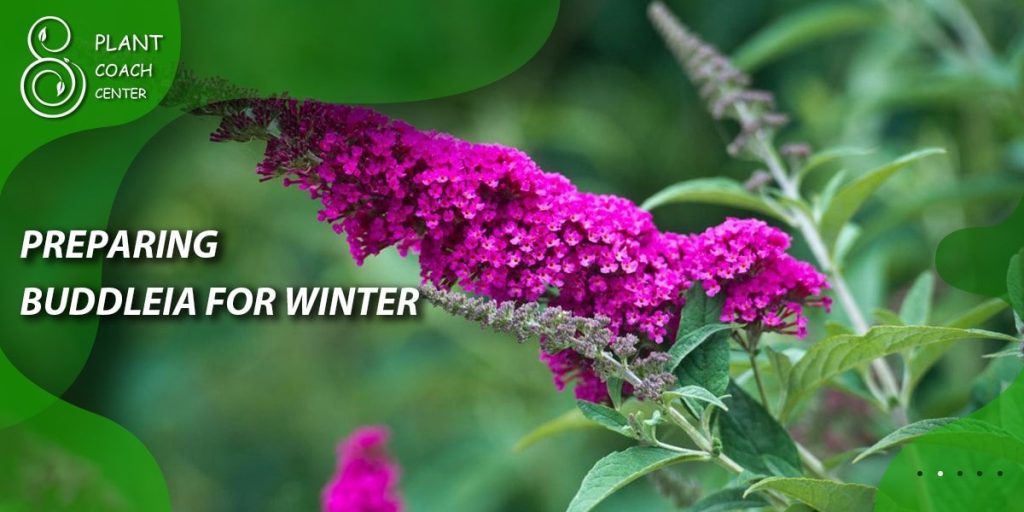
Preparing Buddleia for Winter
As autumn progresses and winter approaches, it’s essential to take proactive measures to prepare your Buddleia for the colder months. Winterizing your butterfly bush helps protect it from potential damage caused by freezing temperatures and harsh weather conditions.
1. Winterizing Strategies
1.1 Clearing Debris and Dead Material
Before winter sets in, thoroughly clean up any fallen leaves, debris, and dead plant material from around the base of your Buddleia. Dead leaves can harbor pests and diseases, and removing them reduces the risk of potential issues in the coming season.
1.2 Mulching and Insulation
Mulching is a crucial winterizing practice for Buddleia, providing insulation and protection for the roots during the colder months. Organic mulch, such as shredded leaves, straw, or wood chips, is ideal for this purpose.
Mulching Method: Apply a 2 to 3-inch layer of mulch around the base of the plant, extending it to cover the entire root zone. Make sure the mulch does not come into direct contact with the main stem.
Benefits: Mulch helps retain soil moisture, moderates soil temperature fluctuations, and provides a protective barrier against extreme temperatures. Additionally, it suppresses weed growth, reducing competition for nutrients and water.
1.3 Wrapping and Covering
In regions where winter temperatures can be particularly harsh, you may want to provide extra protection for your Buddleia. Wrapping the plant or covering it with a frost blanket can safeguard it from frost damage.
Wrapping Method: Using burlap or frost cloth, loosely wrap the entire plant. Ensure the wrap does not bind tightly around the branches, as this could cause damage.
Covering Method: If you have a potted Buddleia, consider moving it to a sheltered location or providing a temporary cold frame or greenhouse to shield it from extreme temperatures.
1.4 Watering
Though Buddleia is relatively drought-tolerant, it’s essential to keep the plant hydrated going into winter. Water your butterfly bush thoroughly before the first hard freeze.
Timing: Watering should be done when the ground is not frozen and when temperatures are above freezing to prevent waterlogging the roots.
2. Protecting Against Cold and Frost
2.1 Cold Air Drainage
When choosing the planting location for your Buddleia, consider cold air drainage patterns. Avoid planting it in low-lying areas where cold air may accumulate, increasing the risk of frost damage.
2.2 Frost Protection
If a late-season frost is predicted after you’ve already pruned your Buddleia, take extra precautions to protect the new growth.
Covering New Growth: Use frost cloths or old blankets to cover the new shoots overnight when frost is expected. Remove the coverings during the day to allow sunlight to reach the plant.
2.3 Frost Heaving Prevention
Frost heaving occurs when the ground freezes and thaws repeatedly during the winter, pushing the plant’s roots out of the soil. To prevent this, ensure the soil is well-draining and amend it with organic matter to improve its structure.
By implementing these winterizing strategies, you can provide your Buddleia with the best chance of surviving the winter unscathed. These practices not only protect the plant from winter damage but also set the stage for robust growth and blooming in the upcoming spring and summer.
Plant Coaching Tips for Year-Round Buddleia Care
To maintain a healthy and thriving Buddleia throughout the year, consider implementing the following plant coaching tips:
1. Spring Tips
- Pruning: In early spring, remove any winter-damaged or dead wood. Perform light shaping to maintain the plant’s form and structure.
- Fertilizing: Apply a balanced, slow-release fertilizer to provide essential nutrients for the growing season.
- Watering: Water your Buddleia deeply but infrequently to encourage strong root growth.
2. Summer Tips
- Deadheading: Continuously deadhead spent flowers to encourage new blooms and extend the flowering season.
- Watering: Water your Buddleia during dry spells, focusing on the root zone to promote deep root development.
- Pest Management: Keep an eye out for pests and address them promptly using appropriate methods.
3. Autumn Tips
- Assessment: Evaluate your Buddleia’s health and identify any issues that need to be addressed before winter.
- Late Autumn Pruning: In late autumn, perform pruning to prepare the plant for winter and encourage new growth in the following year.
4. Winter Tips
- Winterizing: Follow the winterizing strategies discussed earlier to protect your Buddleia from harsh winter conditions.
- Monitoring: Check on your Buddleia periodically during winter, especially after severe weather events, to ensure its well-being.
By being attentive and proactive in your plant coaching efforts, you can enjoy a thriving and beautiful Buddleia in your garden year after year.
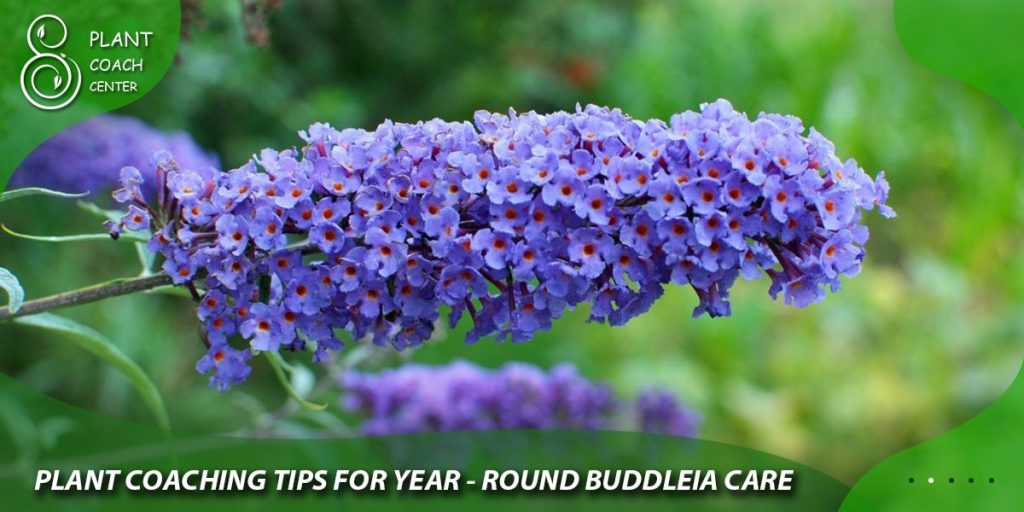
Answering Common Plant Coaching and Buddleia Pruning Questions
As a plant coach and gardener, you may have some burning questions about Buddleia pruning and plant coaching practices. In this section, we will address frequently asked questions and provide comprehensive answers to help you become a more confident and skilled gardener.
1. Can I Prune Buddleia in Early Autumn?
Pruning Buddleia in early autumn can be risky, especially in regions with mild winters where the plant may retain its foliage. Early pruning may stimulate new growth that could be vulnerable to frost damage. It is generally safer to wait until late autumn or early winter to perform more extensive pruning when the plant is dormant or has dropped its leaves.
2. What Happens if I Prune Buddleia Too Late in Autumn?
Pruning Buddleia too late in autumn can lead to several potential issues. If the plant has not entered dormancy and experiences new growth after pruning, the tender shoots may be susceptible to damage from frost or extreme cold temperatures. Additionally, pruning too late may interfere with the plant’s natural hardening-off process, reducing its ability to withstand winter conditions.
3. How Do I Encourage More Flowers on My Buddleia?
To encourage more flowers on your Buddleia, follow these steps:
- Deadheading: Regularly deadhead spent blooms to promote continuous flowering and prevent the plant from diverting energy into seed production.
- Fertilizing: Apply a balanced fertilizer with a higher phosphorus content to support flower development.
- Sunlight: Ensure your Buddleia receives at least 6 to 8 hours of direct sunlight daily, as it thrives in full sun conditions.
4. Should I Cut Back Buddleia in Preparation for Winter?
Cutting back Buddleia in preparation for winter is beneficial, especially in regions where the plant loses its leaves during the colder months. Late autumn pruning helps remove dead, diseased, or damaged wood, promoting a healthier plant and reducing the risk of pests and diseases overwintering on the shrub. Additionally, cutting back can improve air circulation and reduce the risk of fungal infections.
5. Can I Rejuvenate an Overgrown and Neglected Buddleia?
Yes, you can rejuvenate an overgrown and neglected Buddleia through rejuvenation pruning. In late winter or early spring, cut the entire plant back to about 12 to 18 inches above the ground. This drastic pruning stimulates new growth and revitalizes the plant. Be patient, as it may take a season or two for the shrub to fully recover and regain its full beauty.
6. How Do I Identify and Manage Aphids on My Buddleia?
To identify and manage aphids on your Buddleia:
- Visual Inspection: Check the undersides of leaves and new growth for clusters of small, soft-bodied insects.
- Mechanical Control: Use a strong blast of water to dislodge aphids from the plant. You can also manually remove them by gently squishing them between your fingers.
- Beneficial Insects: Encourage natural predators of aphids, such as ladybugs and lacewings, to keep the population in check.
- Insecticidal Soap or Oil: If necessary, use horticultural oils or insecticidal soaps following the manufacturer’s instructions to control aphids.
By addressing these common questions, we hope to equip you with the knowledge and skills to become an adept plant coach and successfully care for your Buddleia and other garden plants.
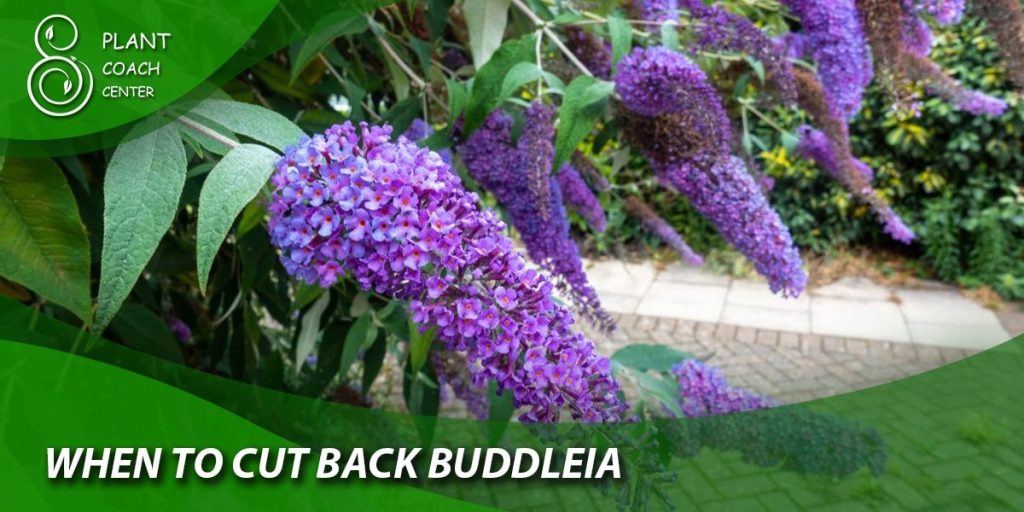
Conclusion: Emphasizing the Value of Plant Coaching and Proper Buddleia Pruning in Autumn
In this comprehensive guide, we have explored the world of Buddleia, its life cycle, and the importance of proper plant coaching in maintaining its health and beauty. Understanding Buddleia growth habits, identifying common problems, and implementing best practices for pruning and winter preparation are key to ensuring a thriving and stunning butterfly bush in your garden.
Remember, as a plant coach, your attentiveness, care, and dedication play a vital role in the success of your garden. By providing your Buddleia with the proper care and timely interventions, you can create an inviting sanctuary for butterflies and other pollinators, while also enjoying the vibrant blooms and delightful charm of this exceptional shrub.
Gardening is a journey of discovery and connection with nature. As you embark on this rewarding journey, embrace the joys and challenges that come with being a plant coach, and relish the beauty that unfolds in your garden with each passing season.
Happy gardening and happy plant coaching!
Can I prune Buddleia in early autumn?
Yes, you can prune Buddleia in early autumn before the first frost.
What happens if I prune Buddleia too late in autumn?
Late pruning may remove next year’s flower buds, affecting blooming.
How do I encourage more flowers on my Buddleia?
Regular deadheading and proper fertilization promote more abundant blooms.


